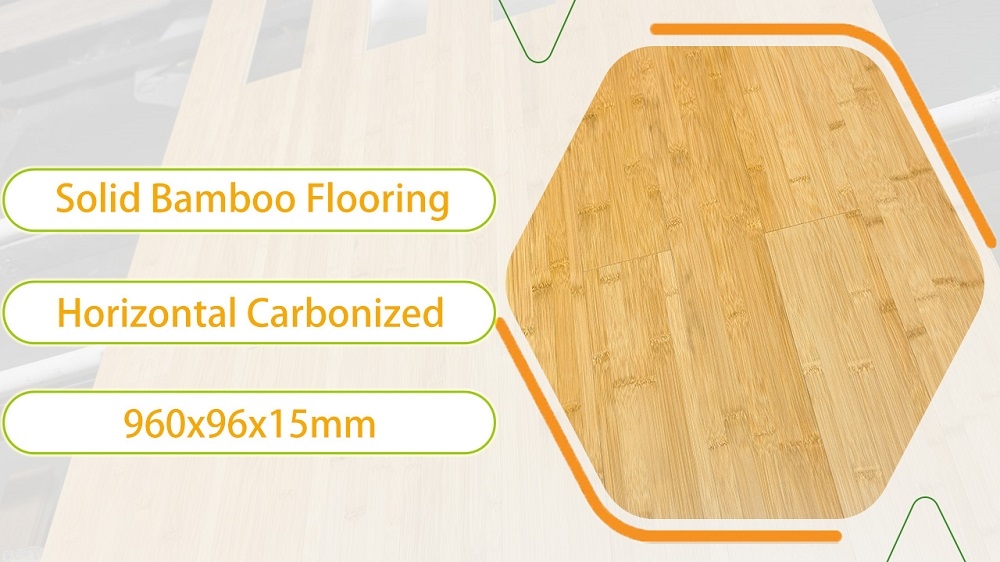
In the thriving flooring market, homeowners and designers often seek materials that strike the right balance between aesthetics, durability, and sustainability. Among the many options available, bamboo and SPC (Stone Plastic Composite) flooring have gained significant popularity. This blog will explore the characteristics, advantages, and potential drawbacks of both materials, providing a comprehensive comparison for informed decision-making.
Understanding the Materials
Bamboo Flooring
Bamboo flooring is crafted from the bamboo plant, a highly renewable resource known for its rapid growth—typically maturing in three to five years. There are several types of bamboo flooring, including horizontal, vertical, and strand-woven, each offering distinctive aesthetics and characteristics.
Bamboo is praised for its natural beauty, showcasing unique grain patterns and textures. It is an eco-friendly choice, providing a sustainable alternative to traditional hardwoods. As a flooring option, bamboo is ideal for many residential and commercial applications, thanks to its strength and aesthetic versatility.
SPC Flooring
SPC flooring is a type of engineered flooring known for its durability and resilience. Made with a core of stone plastic composite (a mix of limestone and PVC), it is designed to withstand varying environmental conditions while providing a robust surface.
This type of flooring is often favored for its waterproof qualities, making it suitable for areas prone to moisture, like kitchens and bathrooms. SPC flooring typically features a printed vinyl layer that mimics the appearance of natural materials, including wood and stone. This versatility enables homeowners to achieve a desired aesthetic without sacrificing functionality.
Aesthetic Appeal
Bamboo Aesthetics
Bamboo flooring is renowned for its rich visual appeal. Its natural hues range from light to dark tones, providing options to suit various design preferences. The unique grain patterns in bamboo can evoke warmth and elegance, complementing a wide range of interior styles, from traditional to contemporary.
The finish on bamboo flooring can be glossy or matte, allowing for further customization based on individual taste. Its organic look can contribute to a serene atmosphere, making it an attractive choice for both residential and commercial spaces.
SPC Aesthetics
SPC flooring’s appearance is highly customizable due to the printed vinyl layer that can replicate various designs. This allows homeowners to achieve the look of natural wood, stone, or tile without the associated maintenance concerns.
While SPC can effectively mimic high-end materials, some may argue that it lacks the authentic texture and feel of real bamboo or hardwood. However, advancements in printing technology have improved the realism of SPC flooring, allowing it to compete aesthetically with natural products.
Durability and Maintenance
Bamboo Durability
Bamboo flooring is considered durable, particularly strand-woven varieties, which are among the hardest flooring materials available. The Janka hardness rating of bamboo averages around 1,300 to 1,400, situating it near oak on the hardness scale. This makes it suitable for high-traffic areas, provided it is maintained properly.
Maintenance for bamboo involves regular cleaning with a soft broom or vacuum, along with occasional damp mopping. It is important to avoid harsh chemicals or excessive water, as bamboo can be sensitive to prolonged moisture exposure. Additionally, bamboo should be kept away from direct sunlight, as UV rays can cause fading over time.
SPC Durability
SPC flooring is engineered for resilience. Its rigid core makes it highly resistant to dents, scratches, and even heavy impacts. It boasts waterproof properties, making it suitable for environments with high humidity or potential water exposure. This characteristic is particularly advantageous for areas like kitchens, bathrooms, and basements.
Maintenance of SPC flooring is straightforward. Regular sweeping or vacuuming, along with occasional damp mopping, will keep the floor looking its best. Unlike bamboo, SPC does not require special cleaning solutions and is less susceptible to damage from moisture, making it a low-maintenance option.
Environmental Impact
Bamboo Sustainability
Bamboo is often hailed as an eco-friendly flooring choice. As a rapidly renewable resource, it grows without the need for fertilizers or pesticides. Bamboo plants release more oxygen than trees, contributing positively to the environment.
Furthermore, many bamboo flooring manufacturers adhere to sustainable harvest practices, ensuring that bamboo is collected without harming the plant's ability to regenerate. Certifications like FSC (Forest Stewardship Council) can further assure consumers that the bamboo was sourced responsibly.
SPC Environmental Considerations
SPC flooring incorporates PVC and limestone, materials that raise some environmental concerns. While SPC does not require deforestation, the production of PVC can involve harmful chemicals. However, many manufacturers strive to implement eco-friendly practices and minimize waste during production.
Regarding recycling, SPC can present challenges. While it is durable, its composite nature makes it less ideal for recycling compared to natural materials. Homeowners should consider local waste management options when disposing of SPC flooring.
Cost Comparison
When evaluating the cost of both flooring options, bamboo generally ranges from $2 to $7 per square foot for materials, depending on quality and type. Installation costs vary based on local labor rates and the complexity of the job.
SPC flooring prices typically range from $3 to $6 per square foot, offering a range of budgets for consumers. Installation costs are generally similar to bamboo, making SPC an accessible option for those looking to enhance their space affordably.
Conclusion
Choosing between bamboo and SPC flooring involves considering various factors, including aesthetics, durability, maintenance, and environmental impact. Bamboo offers natural beauty and sustainability, while SPC provides resilience and ease of maintenance. Each material has its strengths, catering to different preferences and needs in both residential and commercial settings.
Understanding these differences allows consumers to make informed decisions, whether they prioritize eco-friendliness, maintenance requirements, or design versatility. With proper research and consideration, homeowners can select the flooring option that aligns best with their lifestyle and aesthetic desires.
